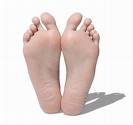
Now that warmer weather is upon us, hopefully most of us will be keen to take more exercise.
But before you dig out those festering trainers from the bottom of the wardrobe, The UK’s Society of Chiropodists and Podiatrists highlights the importance of wearing the right sports shoe and of taking care of your feet as part of your fitness plan, warning that you could risk doing more harm than good if you dont.
Lorraine Jones, podiatrist from The Society of Chiropodists and Podiatrists, said: Exercise is essential for good health, but sport can put a lot of pressure on your knees, hips, back and neck, so getting the right shoe for the right sport can help minimise injury and keep you comfortably on track to reach your set goal.
When we run, our body weight is multiplied three times or more, with your feet and lower limbs bearing the brunt of this stress each and every time they hit the ground. An average sized-man can process approximately 112 tons of weight through each limb for every mile run.
Sports lovers and those getting fit for the first time need to give their footwear and the health of their feet the same consideration as any other part of their body when preparing for the off.
So whether walking, dancing or pounding the pavements is the choice of exercise for 2010, The Society of Chiropodist and Podiatrists offers the following advice to help keep feet fighting fit.
Follow the 1cm rule – when shopping for the perfect sports shoes ensure you can wiggle your toes a little leave 1cm of room from the top of your longest toe at the end of your shoe. Try on both shoes and walk around the shop to make sure they dont pinch or rub.
Warm up and stretch – before starting any form of exercise, stretch and warm up your entire body and then stretch and warm down at the end of every session…
Get the right socks
Always wear socks to reduce the risk of fungal infection and blisters. The best running socks are ones that are made from synthetic materials which are designed to wick sweat away from the skin, (such as CoolMaxÒ) as they dont absorb moisture like 100% cotton socks, and keep the feet drier.
Choose the correct shoes for the sport.
If running is the choice for 2010, buy a running shoe which has adequate cushioning in the midsole and a flared heel for stability. However, if its a racquet sport such as squash or tennis, buy shoes designed for racquet sports that give better stability when moving and stopping suddenly around the court -a running shoe wouldnt be suitable due to lack of lateral support.
How to avoid blisters
· How to avoid blisters – Blisters are painful, fluid filled lesions caused by friction from ill-fitting shoes, excessive moisture, or wrinkled socks against the skin. To prevent them, keep your feet dry, always wear socks as a cushion between your feet and your shoes and always wear properly fitting shoes. If a blister does occur, never pop it.
· Seek expert advice if necessary if you have ongoing foot pain that doesnt go away, get it checked out.
Tips for buying the right trainers from The Society of Chiropodists and Podiatrists
§ Buy shoes designed for the activity you want to do. Running shoes are very flexible, allowing the foot to bend and flex through each step, they have increased shock absorption for when the heel strikes the ground and are designed for forward motion. Sports such as tennis, basketball and aerobics involve sideways stepping, and require shoes that provide greater sideways support.
§ A common mistake is to buy trainers that are too small. Shoe manufacturers produce trainers designed for people with low arches and high arches. Its vital that sales staff recognise this and provide the right shoe for the type of foot. Buy trainers from a specialist sports shoe shop where the staff are trained in fitting.
§ The most important thing is that your sports shoes are appropriate for your body and your workout. Choose a reputable manufacturer, not a high street shop with own brand trainers.
§ If youre training every day, ideally have two pairs of trainers and alternate them to allow them to dry out over 24 hours.
§ For more information on choosing a sports shoe, or to find your local registered podiatrist, visit The Society of Chiropodists and Podiatrists website www.feetforlife.org

